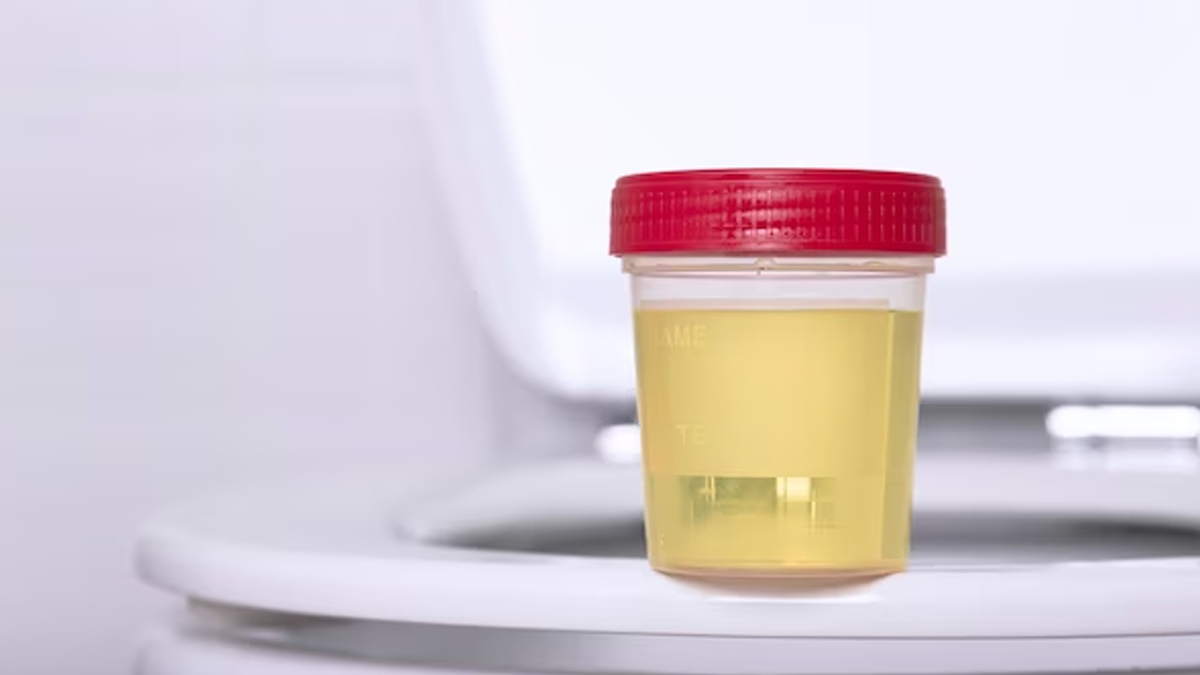
A urine test can help detect a wide range of disorders, such as urinary tract infections, kidney disease, and diabetes. It can also tell you whether you're pregnant or reveal if you have developed a Sexually Transmitted Infection (STI). While not with the same accuracy, the colour of your urine can also provide insights into your physical health.
Table of Content:-
Depending on how clear, cloudy, or yellow your urine is, you can tell whether you're out of danger or may have certain underlying issues. Abnormalities in urine, such as the presence of blood, protein, or specific chemicals, may indicate a more serious problem. In an interaction with the OnlyMyHealth team, Dr Prakash Sankapal, Consultant-Urologist, Fortis Hiranandani Hospital, Vashi, shared a complete urine analysis chart to understand what different urine colours mean.
Also Read: 5 Side Effects Of Holding In Urine For Too Long
Pale Or Clear Yellow

Normal urine colour is clear to pale yellow; this indicates that your body is hydrated, said Dr Sankapal.
However, drinking too much water can impact the electrolyte level in the body, leading to clear urine, he added.
Having clear urine could therefore indicate that you need to cut down on water consumption.
Additionally, if you have dark brown but clear urine, it can indicate a liver disorder like cirrhosis or acute viral hepatitis, according to the National Library of Medicine.
“Stop drinking water until you're thirsty again and your urine returns to a normal, light yellow,” advised Dr Sankapal.
Deep Yellow
If your urine colour is deep yellow, then it indicates dehydration, and you must increase your fluid intake.
Dr Sankapal said, “Dark yellow urine is common in the morning after your sleep, as 7-8 hours have passed since your last drink of water.” However, if it happens in the daytime also, then your body needs to be hydrated, he added.
The ideal intake should be 3 litres per day, or a minimum of 10–12 glasses of water per day.
Red Colour

A red urine colour may seem alarming, but it can be due to several reasons. These include:
- Intake of fruits like beets, blueberries, or rhubarb that naturally contain magenta or deep pink pigments
- Medical conditions, such as stones in the urinary tract system (kidney, ureter, or bladder), Urinary Tract Infection (UTI), or tumours in the kidney or bladder
- Use of certain medications that contain laxatives and phenazopyridine (Pyridium)
Also Read: How Hydrated Are You? The Colour Of Your Urine Can Tell
Orange Colour
Orange-coloured urine signals mild dehydration, and one might need to increase the intake of fluid.
The medical reason behind it can be issues in the liver or bile duct, said Dr Sankapal, adding that if you have orange urine with pale stools or yellow eyes and skin, it could be a sign of a liver issue.
In addition, anti-inflammatory drugs, laxatives, or chemotherapy drugs might also change the urine colour to orange.
Brown Colour

Severe dehydration results in brown-coloured urine. This may also indicate several medical conditions, like blood in the urine, kidney disease, liver disease, or an infection that may need immediate medical intervention.
Blue/Green Colour
Blue-coloured urine is a rare scenario and occurs mostly due to changes in diet.
Green urine may also indicate a rare genetic condition or a urinary tract infection. It can also be due to drugs like antidepressants or drugs containing phenol.
Cloudy/Milky Urine
From dehydration to UTIs to STIs, several conditions can lead to cloudy urine. Other medical conditions that can trigger cloudy urine include kidney stones, diabetes, prostate issues, and vaginitis.
Conclusion
Pale yellow is the colour of urine you should aim for. While clear urine does not mean danger, it can indicate that you’re over-hydrated and may have to cut down on your consumption. More visible colours like brown, dark yellow, red, green, and blue may signify dehydration, but they can also be a result of underlying health conditions and certain medications. Do not overlook urine that appears cloudy, as it can indicate a UTI or an STI. Speak with your doctor if you experience sudden changes in the appearance of your urine.
Also watch this video
How we keep this article up to date:
We work with experts and keep a close eye on the latest in health and wellness. Whenever there is a new research or helpful information, we update our articles with accurate and useful advice.
Current Version